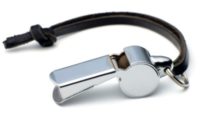-Public health
Opening school playgrounds for after-school use can help improve fitness
American Heart Association says kids need to be physically active

 School districts can increase physical activity among children and young adults by opening playgrounds, gyms and fields to the community outside of school hours, especially in low-income areas, according to an American Heart Association (AHA) policy statement published in the American Journal of Public Health.
School districts can increase physical activity among children and young adults by opening playgrounds, gyms and fields to the community outside of school hours, especially in low-income areas, according to an American Heart Association (AHA) policy statement published in the American Journal of Public Health.
The statement recommends that school districts enter “shared use” agreements with community organizations to allow supervised activities such as sports leagues and unsupervised playing on school grounds, and notes that low-income communities have less access to recreational spaces and community recreation centers.
“If you want to get active, you need a place to be active,” said Deborah Rohm Young, primary author of the statement. Dr. Young is with the Department of Research and Evaluation at Kaiser Permanente Southern California in Pasadena. “We need more voices to help local schools share their playgrounds and gyms with the community.”
The New Orleans experiment
When previously locked schoolyards in two lower-income communities in New Orleans were opened and activities supervised, children’s outdoor physical activity was 84 percent higher than in a community with closed schoolyards, according to research cited in the statement.
Who pays?
Recognizing that schools have legitimate concerns with simply unlocking their gates and doors, the statement identifies five key issues they must first address with community organizations:
Dollars: Who pays the bill? Shared use agreements can address who will maintain facilities or pay to keep the lights on after school by including requirements for third-party users. Schools in states that designate their schools as public facilities may qualify for funding from state recreation plans or other funding sources.
Dialogue: Dialogue can be a barrier when schools and organizations use different terminology. States can help to clarify and expand this dialogue by developing toolkits and authorizing schools to enter into shared use agreements.
Design: Schools have varying types and amounts of spaces available for physical activity. Those that open their property to the community for physical activity may qualify for additional state funds.
Damage: Liability for damage to school property or injuries on school property during non-school hours is a great concern for schools. States can limit liability in either case. Shared use agreements can require other organizations using school facilities to carry insurance to cover damages.
Decisions: Schools must be able to determine which groups are eligible to use their property and enter into a shared use agreement. A successful shared use system can set clear decision-making processes, help schools prioritize community organizations and prevent unfair preferences.
A recent survey by the Centers for Disease Control and Prevention reports 61.6 percent of 800 districts surveyed nationwide currently have a formal agreement for use of their facilities. Voices for Healthy Kids, a national advocacy iniative focused on preventing childhood obesity, is working to increase the number of shared use agreements and respond to the five key issues identified by the statement released today.
“The bottom line is sharing spaces can bring communities together and improve the health of all residents,” said Young. “Many schools have found ways to make it work and with the low rates of physical activity among kids and families, every green space and playground that is available means more kids that are active, more kids that are healthy, and more families having fun.”
To learn more about the childhood obesity epidemic and how you can help turn it around at www.voicesforhealthykids.org.
Looking for a reprint of this article?
From high-res PDFs to custom plaques, order your copy today!






